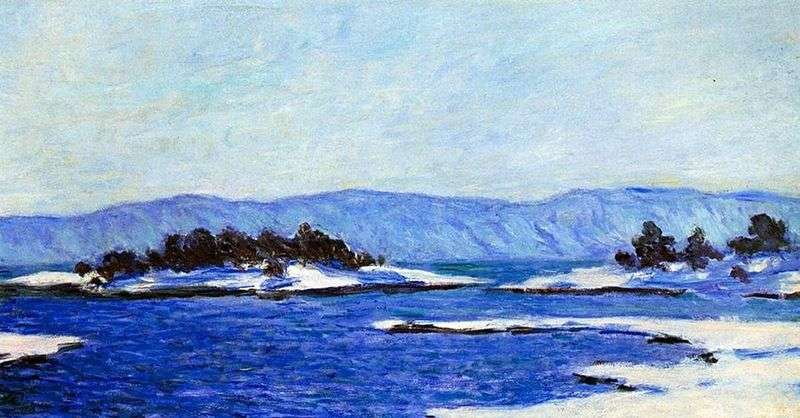
The impression of cold violet and ultramarine is spread on the canvas of the French painter Claude Monet “Edge of fjord, Christiania”. A picture veiled by a complex name is knocked out of the multicolor of the author’s collection with a more or less uniform palette, bicolor.
As befits Impressionism, the flow of the “Edge of Fjord” is very juicy and bold, without a clear contour of the borders of the snow-covered islets, with a mass of small and large strokes. These oil strokes can be broken down into components that Claude Monet certainly used in his work. There are six of them, as well as the colors of the rainbow spectrum, where blue, being a component of blue, is not taken into account. Upon further consideration, these brushstrokes merge into a clear gray-bluish border of thaw patches, wave fragments, and a mass of accumulated trees. No less interesting plot.
The choice of writing the landscape of the reservoir, piercing the land with rocky edges, pursued the master because of his residence in the Netherlands. This land had a similar structure of stone coast and numerous islands. Christiania itself, or Christiania, as geographic sources indicate, was located within Denmark, representing a state within a state. The goal of creating a mini-state in the quarter of Copenhagen was pursued by love of will and will. Perhaps that Christiania, which was written by the artist, was merely taken for an idea, but not related to historical background. The landscape of the snow-covered edge of Monet conveyed in colors, seen as if through a blue prism.
The gloomy sky hangs in a smooth veil, which is typical of a winter lull before snowfall. Scorching frost runs from the depths of saline water to the pale hills on the horizon. The master applied the impasto multi-layer painting method, which made the letter more voluminous and rich. The density of the layers set the texture of individual elements. Due to the combination of small dotted lines and wide brushstrokes, rare islands of trees seem voluminous. Christiania Monet is very clean, spacious and quiet. It does not seem that people live here at all, and the monotony of light and shade involves writing from memory.
